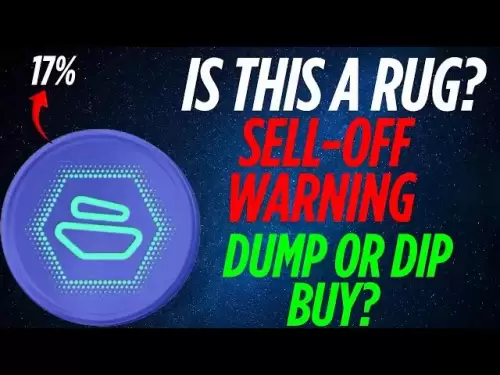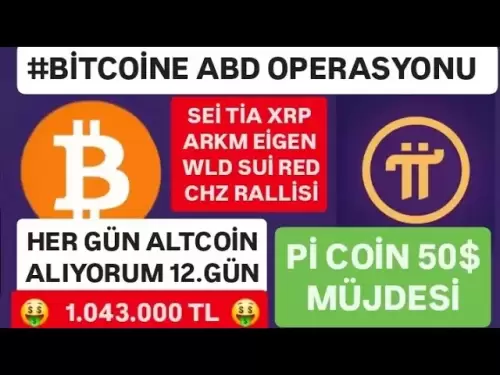-
 Bitcoin
Bitcoin $107,810.8710
-1.45% -
 Ethereum
Ethereum $2,531.4386
-1.75% -
 Tether USDt
Tether USDt $1.0000
-0.03% -
 XRP
XRP $2.2542
-0.99% -
 BNB
BNB $659.1350
-0.50% -
 Solana
Solana $148.5456
-2.40% -
 USDC
USDC $0.9999
-0.02% -
 TRON
TRON $0.2868
-0.44% -
 Dogecoin
Dogecoin $0.1666
-3.65% -
 Cardano
Cardano $0.5751
-2.36% -
 Hyperliquid
Hyperliquid $37.6845
-5.51% -
 Bitcoin Cash
Bitcoin Cash $494.9448
-0.65% -
 Sui
Sui $2.8396
-3.31% -
 Chainlink
Chainlink $13.2423
-2.59% -
 UNUS SED LEO
UNUS SED LEO $9.0482
0.02% -
 Stellar
Stellar $0.2467
-2.44% -
 Avalanche
Avalanche $17.8165
-3.63% -
 Shiba Inu
Shiba Inu $0.0...01158
-2.41% -
 Toncoin
Toncoin $2.7397
-3.42% -
 Hedera
Hedera $0.1560
-2.73% -
 Litecoin
Litecoin $85.8559
-2.34% -
 Monero
Monero $315.3710
-2.30% -
 Dai
Dai $1.0001
0.00% -
 Polkadot
Polkadot $3.3443
-2.03% -
 Ethena USDe
Ethena USDe $1.0001
0.01% -
 Bitget Token
Bitget Token $4.2888
-3.73% -
 Uniswap
Uniswap $7.3388
-1.57% -
 Aave
Aave $278.2986
-3.05% -
 Pepe
Pepe $0.0...09807
-3.67% -
 Pi
Pi $0.4563
-2.39%
How to sell NFTs on Crypto.com?
Selling NFTs on Crypto.com is easy: set up an account, list your NFTs, manage listings, and complete sales, all while navigating a user-friendly platform.
Apr 17, 2025 at 08:14 am
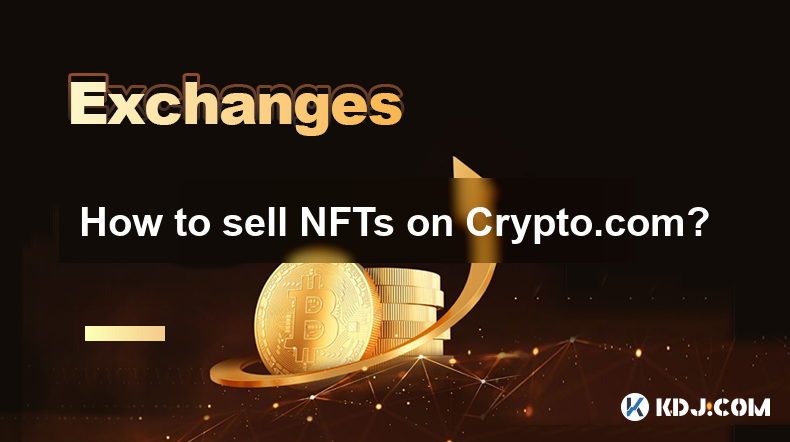
Selling NFTs on Crypto.com can be an exciting venture for anyone looking to dive into the world of digital assets. Crypto.com offers a user-friendly platform that allows you to list, manage, and sell your NFTs with ease. In this guide, we'll walk you through the entire process, from setting up your account to successfully completing your first NFT sale.
Setting Up Your Crypto.com Account
Before you can start selling NFTs on Crypto.com, you need to ensure that you have an account set up. If you're new to the platform, follow these steps to get started:
- Visit the Crypto.com website and click on the "Sign Up" button.
- Enter your email address and create a strong password.
- Verify your email by clicking on the link sent to your inbox.
- Complete the KYC (Know Your Customer) process by providing the necessary identification documents. This step is crucial for ensuring the security of your account and compliance with regulatory standards.
- Once your account is verified, you'll have access to the full range of features, including the NFT marketplace.
Navigating to the NFT Marketplace
After setting up your account, the next step is to navigate to the NFT marketplace on Crypto.com. Here's how you can do it:
- Log in to your Crypto.com account.
- Click on the "NFT" tab located at the top of the homepage.
- You will be directed to the NFT marketplace, where you can explore, buy, and sell various NFTs.
Listing Your NFT for Sale
Once you're in the NFT marketplace, you can start listing your NFT for sale. Follow these steps to list your NFT:
- Click on the "Create" button at the top right corner of the NFT marketplace page.
- Select "Sell an NFT" from the dropdown menu.
- Choose the NFT you want to sell from your collection. If you haven't minted an NFT yet, you'll need to do that first.
- Set the price for your NFT. You can choose between a fixed price or an auction format.
- Enter additional details such as the title, description, and any other relevant information about your NFT.
- Review all the details carefully before proceeding.
- Click on the "List for Sale" button to finalize the listing process.
Managing Your NFT Listings
After listing your NFT, you'll want to keep an eye on its performance and make any necessary adjustments. Here's how you can manage your listings:
- Go to the "My NFTs" section within the NFT marketplace.
- Find the NFT you've listed and click on it to view more details.
- You can edit the price or other listing details if needed by clicking on the "Edit Listing" button.
- If you decide to remove the NFT from sale, click on the "Delist" button.
Completing the Sale
Once someone purchases your NFT, you'll need to complete the sale process. Here's what happens next:
- The buyer will complete the purchase using the payment method linked to their Crypto.com account.
- You will receive a notification once the sale is complete.
- The funds from the sale will be credited to your Crypto.com wallet, minus any applicable fees.
- You can then withdraw the funds to your bank account or use them to purchase other cryptocurrencies or NFTs.
Understanding Fees and Payouts
It's important to understand the fees associated with selling NFTs on Crypto.com. Here's a breakdown of what you can expect:
- Listing Fee: There is no listing fee to list your NFT on Crypto.com.
- Seller Fee: Crypto.com charges a 2.5% seller fee on the final sale price of your NFT.
- Payouts: The funds from your NFT sale will be available in your Crypto.com wallet after the transaction is complete. You can withdraw these funds to your bank account, subject to any withdrawal fees.
Frequently Asked Questions
Q: Can I sell multiple NFTs at once on Crypto.com?
A: Yes, you can list multiple NFTs for sale on Crypto.com. Simply follow the listing process for each NFT you want to sell.
Q: How long does it take to receive the funds from an NFT sale?
A: Once the sale is complete, the funds are typically credited to your Crypto.com wallet immediately. However, the exact timing may vary based on network congestion and other factors.
Q: Can I change the price of my NFT after it's been listed?
A: Yes, you can edit the price of your NFT at any time by going to the "My NFTs" section and selecting the NFT you want to modify.
Q: Are there any restrictions on the types of NFTs I can sell on Crypto.com?
A: Crypto.com allows the sale of various types of NFTs, including art, music, collectibles, and more. However, you must ensure that your NFTs comply with Crypto.com's terms of service and do not infringe on any copyrights or trademarks.
Disclaimer:info@kdj.com
The information provided is not trading advice. kdj.com does not assume any responsibility for any investments made based on the information provided in this article. Cryptocurrencies are highly volatile and it is highly recommended that you invest with caution after thorough research!
If you believe that the content used on this website infringes your copyright, please contact us immediately (info@kdj.com) and we will delete it promptly.
- BlockDAG Leads the Web3 Race with Sports Partnerships and Strategic Pricing
- 2025-07-08 10:50:12
- Pepe, Dogecoin, Shiba Inu: Meme Coin Mania or Calculated Crypto?
- 2025-07-08 10:30:12
- Bitcoin, Ethereum, and Tariff Tussles: Decoding the Crypto Market's Latest Moves
- 2025-07-08 10:30:12
- PEPE, AVAX, Technical Analysis: Riding the Crypto Wave
- 2025-07-08 11:10:12
- BTC Whale's $8.6B Move: Hack, Transfer, or Just a FUD Panic?
- 2025-07-08 11:10:12
- Bitcoin, Treasuries, and the Surge: What's Driving the Market?
- 2025-07-08 11:15:11
Related knowledge
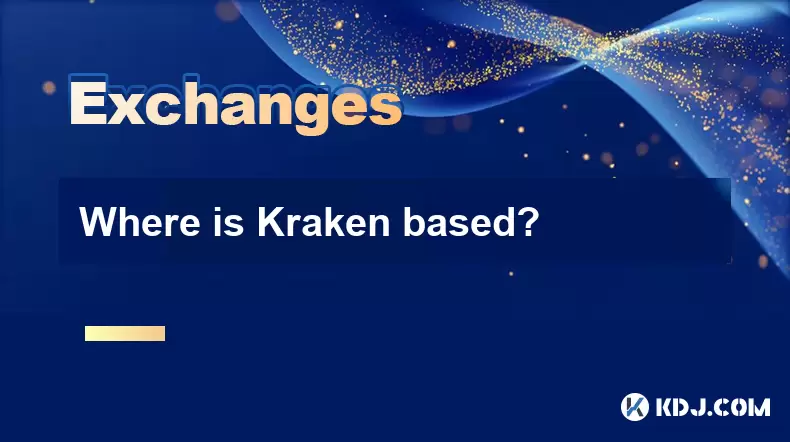
Where is Kraken based?
Jul 08,2025 at 12:00pm
What is Kraken?Kraken is one of the most established and trusted cryptocurrency exchanges in the world. Founded in 2011, it has grown to become a go-to platform for traders seeking reliability, security, and advanced trading tools. The exchange supports a wide variety of cryptocurrencies, including Bitcoin (BTC), Ethereum (ETH), Litecoin (LTC), and many...
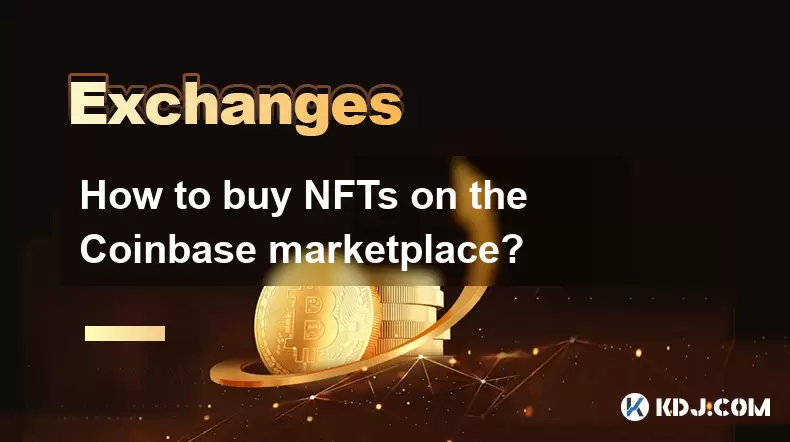
How to buy NFTs on the Coinbase marketplace?
Jul 08,2025 at 12:28pm
Understanding the Basics of NFTs and Coinbase MarketplaceBefore diving into how to buy NFTs on the Coinbase marketplace, it's crucial to understand what NFTs are. Non-fungible tokens (NFTs) are unique digital assets that represent ownership of a specific item or content, often linked to digital art, collectibles, music, or virtual real estate. The Coinb...
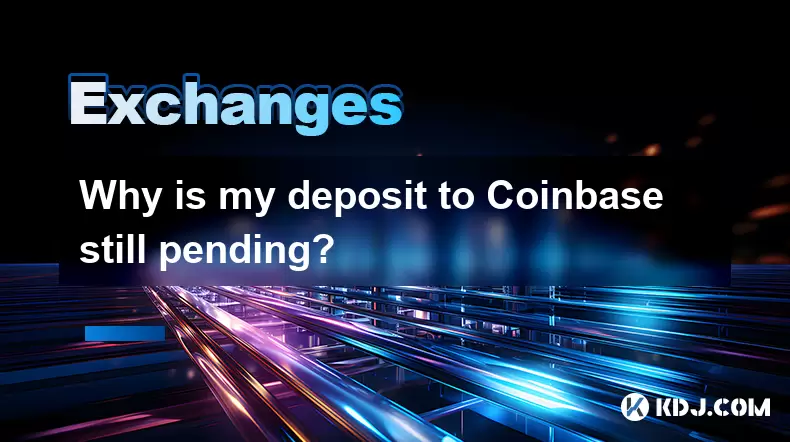
Why is my deposit to Coinbase still pending?
Jul 08,2025 at 11:14am
Understanding Pending Deposits on CoinbaseIf you've initiated a deposit to your Coinbase account and it's showing as pending, there could be several reasons behind this status. A pending deposit typically means that the transaction has been broadcasted or initiated but hasn't yet received enough confirmations from the blockchain network to be finalized....
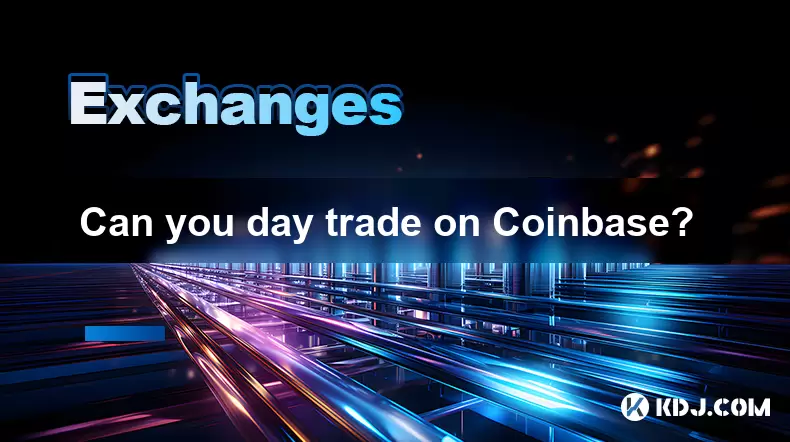
Can you day trade on Coinbase?
Jul 08,2025 at 12:14pm
Understanding Day Trading on CoinbaseDay trading refers to the practice of buying and selling financial assets within a single trading day, aiming to profit from short-term price movements. When it comes to cryptocurrencies, this strategy is widely adopted due to the market's high volatility. The question arises: can you day trade on Coinbase? The answe...
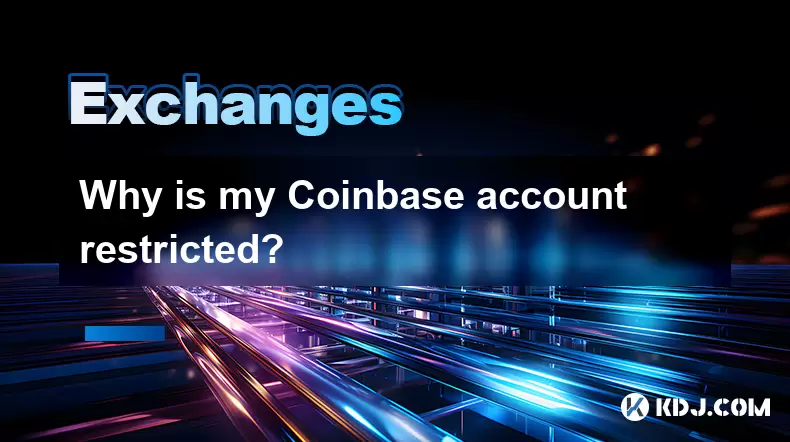
Why is my Coinbase account restricted?
Jul 08,2025 at 11:01am
Account Verification and Identity RequirementsOne of the most common reasons a Coinbase account becomes restricted is due to incomplete or unverified identity information. Coinbase requires users to complete Know Your Customer (KYC) procedures, which include submitting government-issued identification documents, proof of address, and sometimes selfies f...
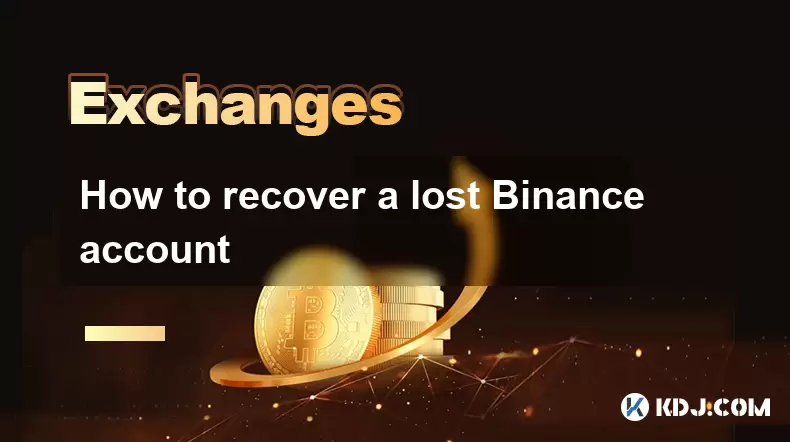
How to recover a lost Binance account
Jul 07,2025 at 09:07pm
What Happens When a Binance Account Is Lost?Losing access to your Binance account can be a distressing experience, especially if you hold significant digital assets. This typically occurs due to forgotten login credentials, loss of two-factor authentication (2FA) devices, or compromised accounts. Understanding the exact reason behind losing access is cr...

Where is Kraken based?
Jul 08,2025 at 12:00pm
What is Kraken?Kraken is one of the most established and trusted cryptocurrency exchanges in the world. Founded in 2011, it has grown to become a go-to platform for traders seeking reliability, security, and advanced trading tools. The exchange supports a wide variety of cryptocurrencies, including Bitcoin (BTC), Ethereum (ETH), Litecoin (LTC), and many...

How to buy NFTs on the Coinbase marketplace?
Jul 08,2025 at 12:28pm
Understanding the Basics of NFTs and Coinbase MarketplaceBefore diving into how to buy NFTs on the Coinbase marketplace, it's crucial to understand what NFTs are. Non-fungible tokens (NFTs) are unique digital assets that represent ownership of a specific item or content, often linked to digital art, collectibles, music, or virtual real estate. The Coinb...

Why is my deposit to Coinbase still pending?
Jul 08,2025 at 11:14am
Understanding Pending Deposits on CoinbaseIf you've initiated a deposit to your Coinbase account and it's showing as pending, there could be several reasons behind this status. A pending deposit typically means that the transaction has been broadcasted or initiated but hasn't yet received enough confirmations from the blockchain network to be finalized....

Can you day trade on Coinbase?
Jul 08,2025 at 12:14pm
Understanding Day Trading on CoinbaseDay trading refers to the practice of buying and selling financial assets within a single trading day, aiming to profit from short-term price movements. When it comes to cryptocurrencies, this strategy is widely adopted due to the market's high volatility. The question arises: can you day trade on Coinbase? The answe...

Why is my Coinbase account restricted?
Jul 08,2025 at 11:01am
Account Verification and Identity RequirementsOne of the most common reasons a Coinbase account becomes restricted is due to incomplete or unverified identity information. Coinbase requires users to complete Know Your Customer (KYC) procedures, which include submitting government-issued identification documents, proof of address, and sometimes selfies f...

How to recover a lost Binance account
Jul 07,2025 at 09:07pm
What Happens When a Binance Account Is Lost?Losing access to your Binance account can be a distressing experience, especially if you hold significant digital assets. This typically occurs due to forgotten login credentials, loss of two-factor authentication (2FA) devices, or compromised accounts. Understanding the exact reason behind losing access is cr...
See all articles

























